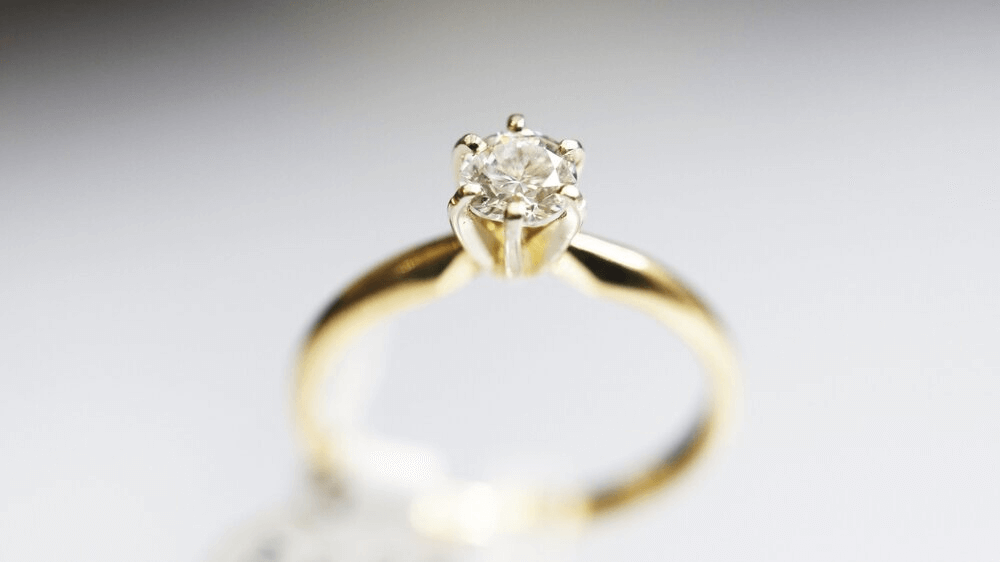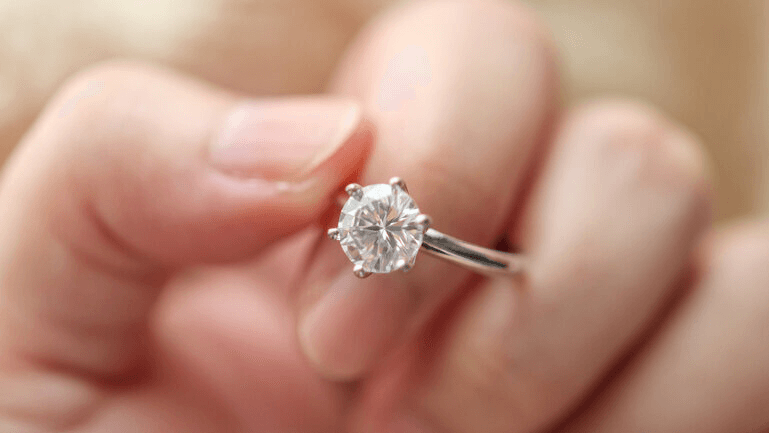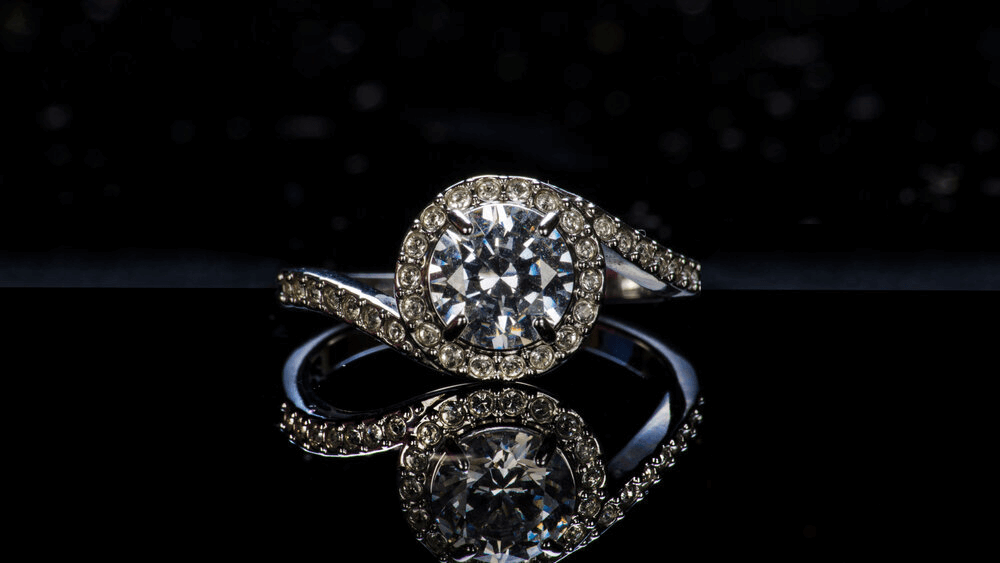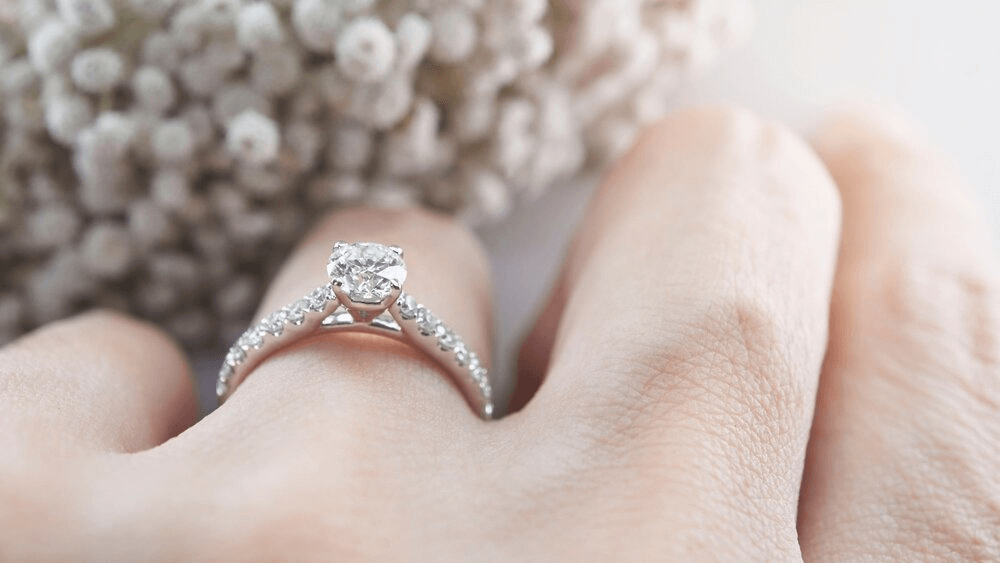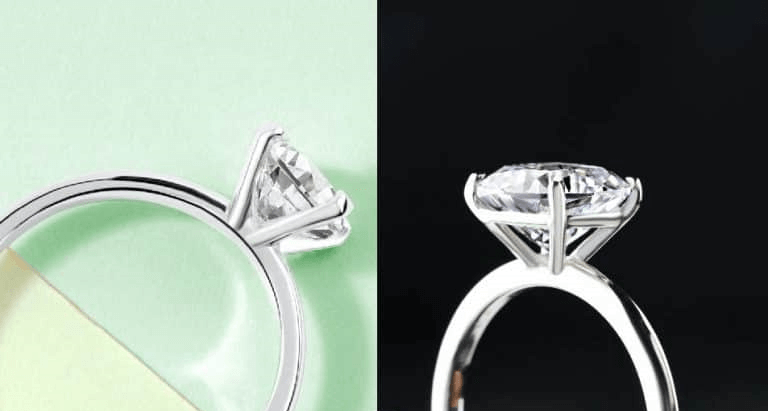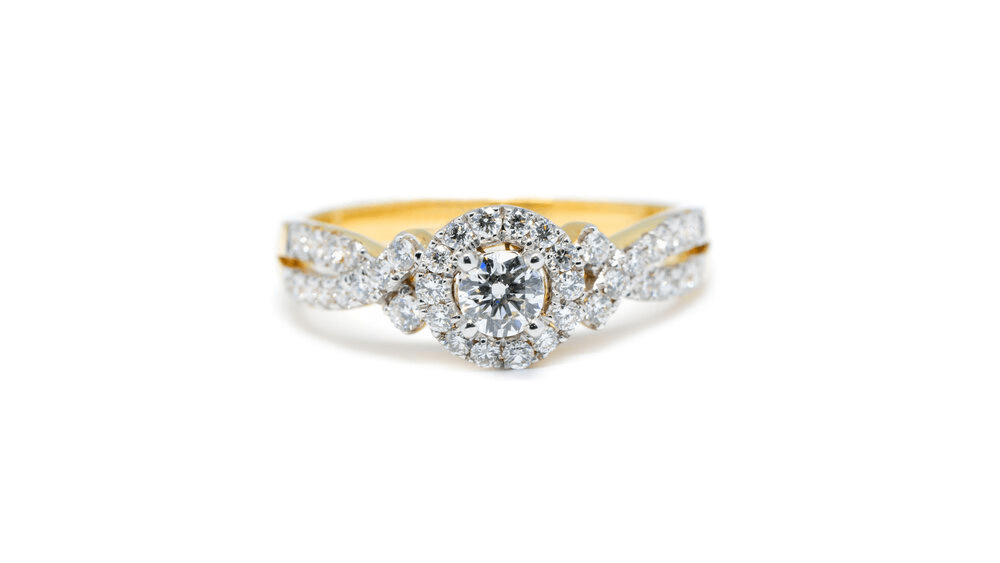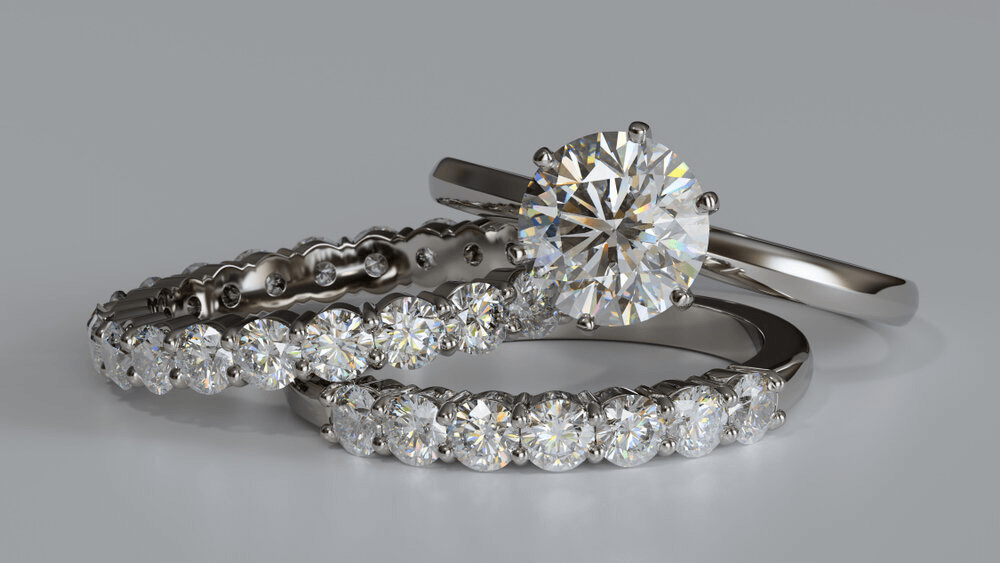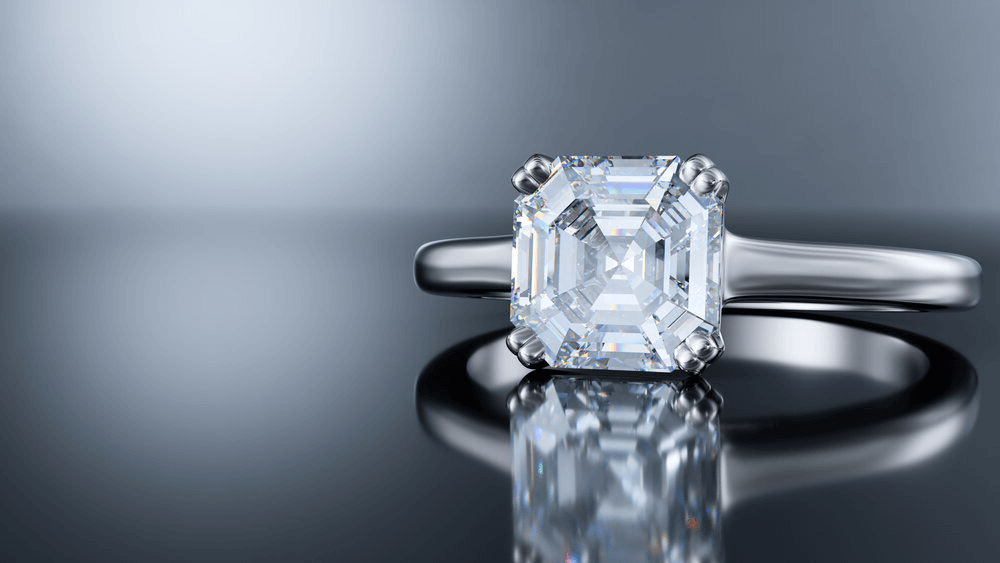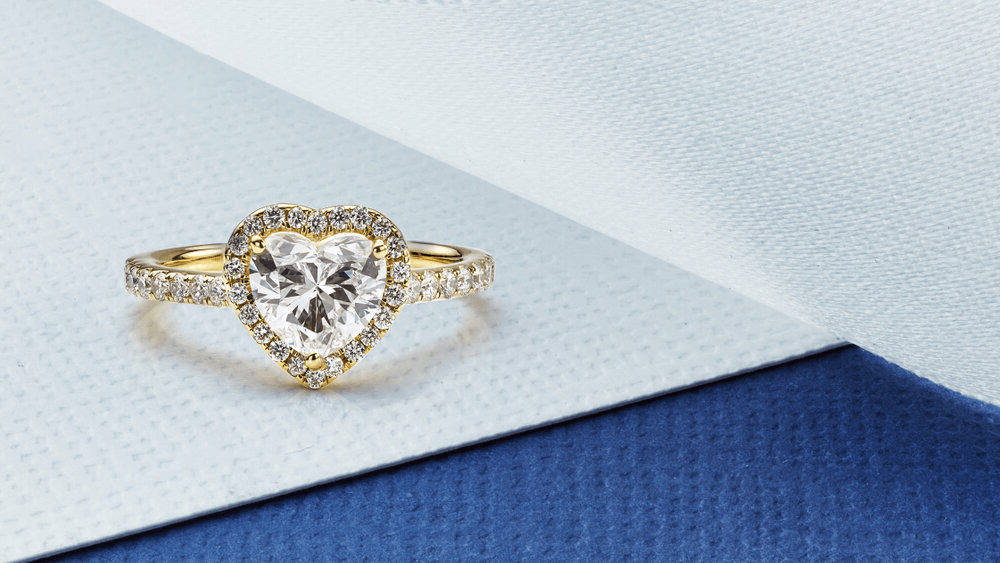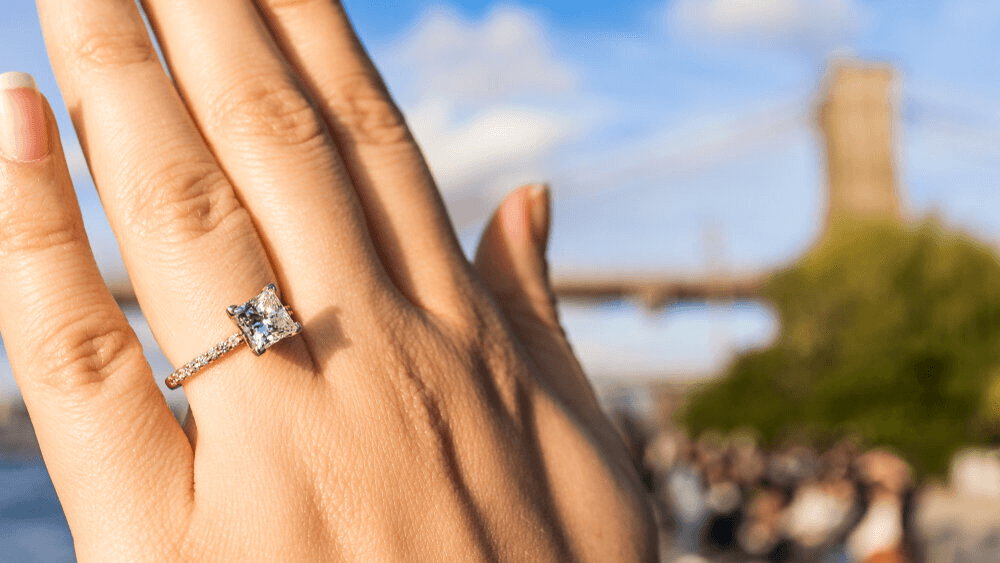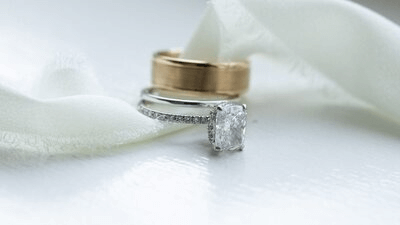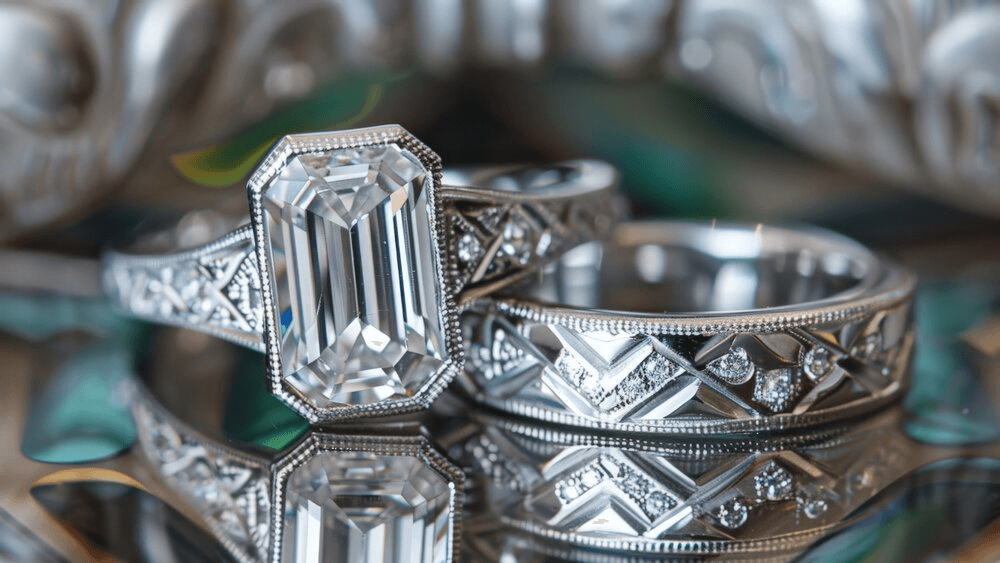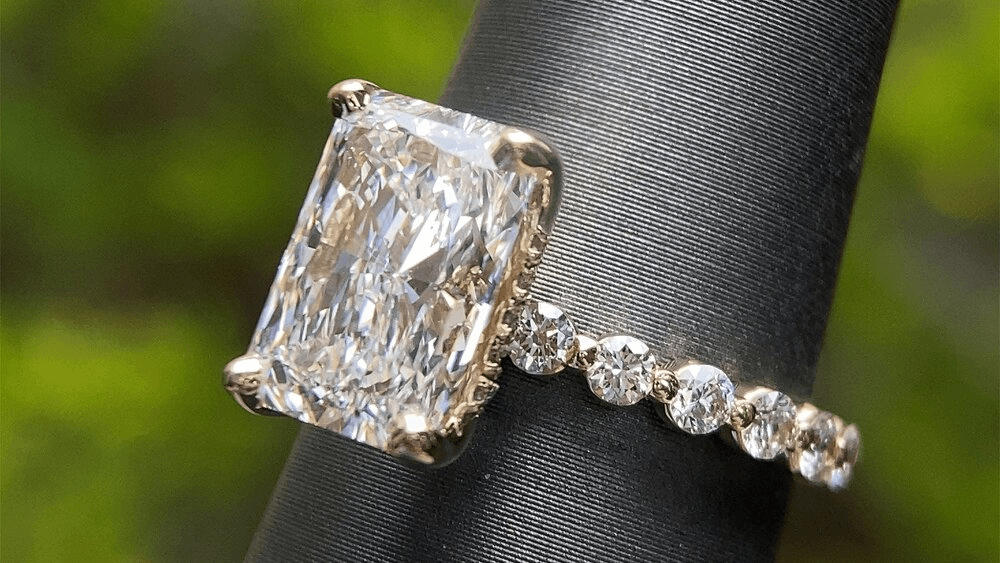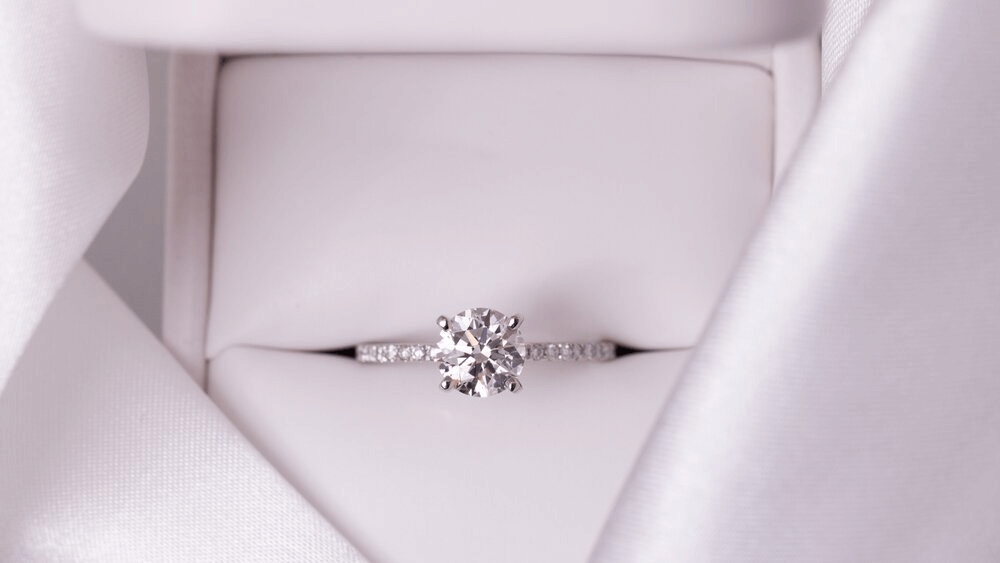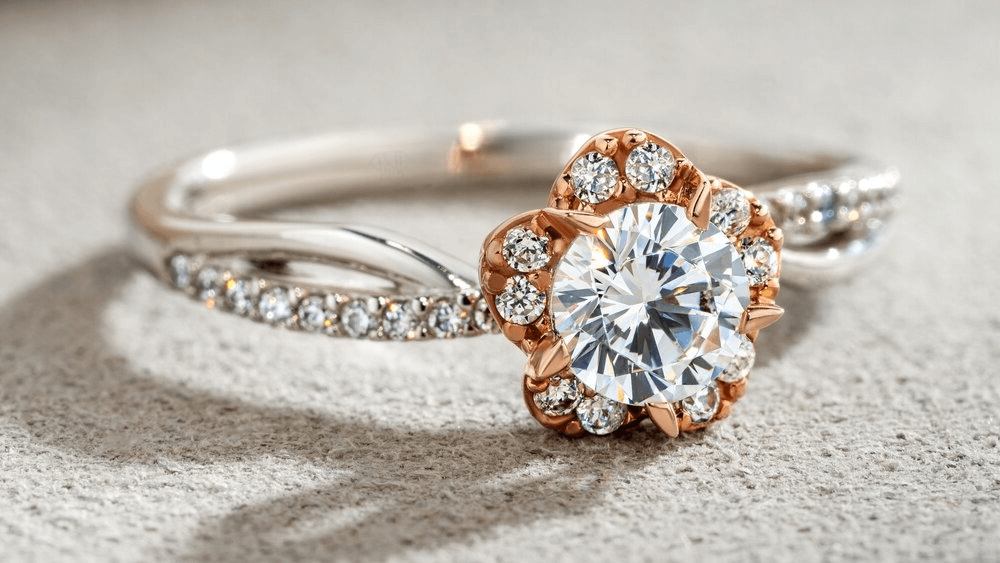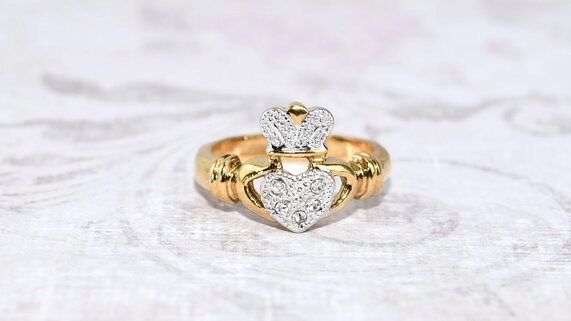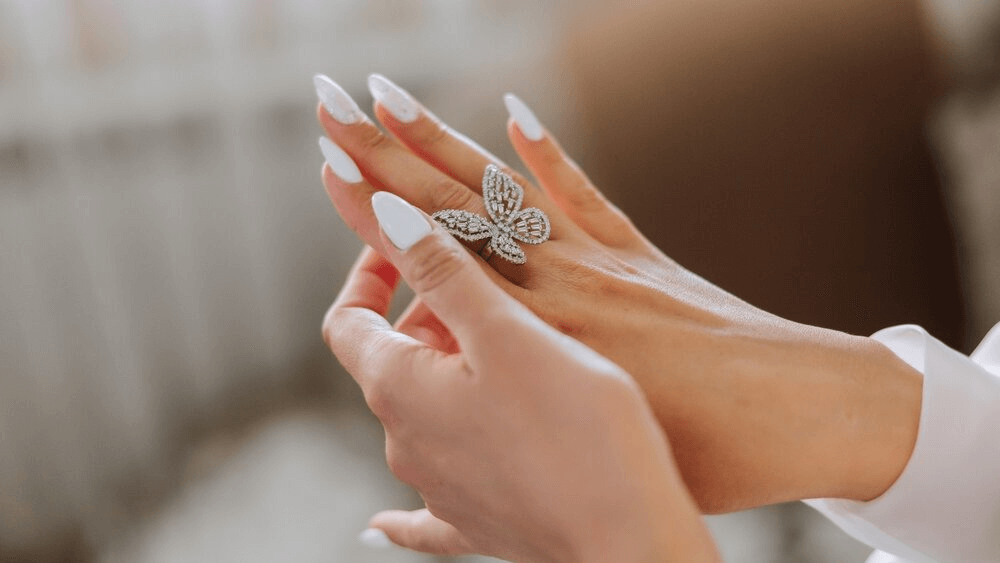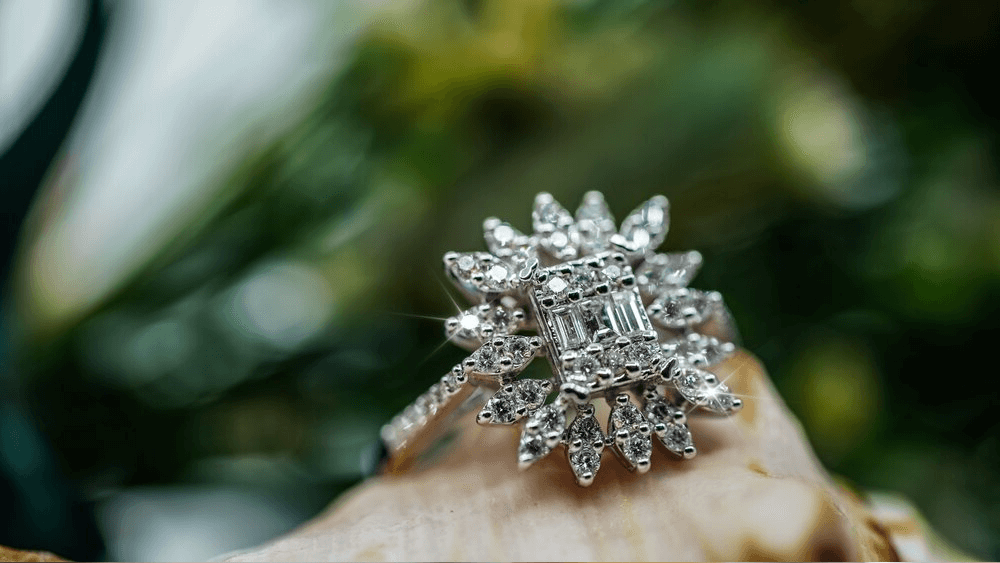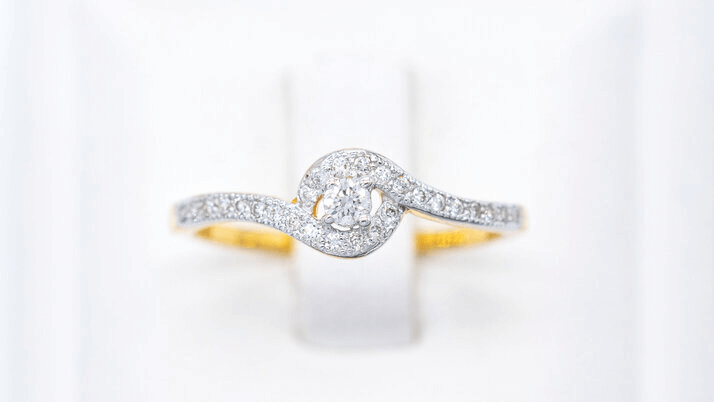Why Oval Diamond Rings Are the New Must-Have

By Gary A.

Edited by Olivia H.
Published Aug 13, 2024
Edited on Mar 31, 2025
Oval cut diamond rings are the epitome of timeless elegance, offering a blend of classic beauty and modern sophistication that makes them a standout choice for those seeking a truly unique engagement ring. Dive into our comprehensive guide to unlock the secrets behind their enduring allure and discover the perfect oval cut ring for your love story.
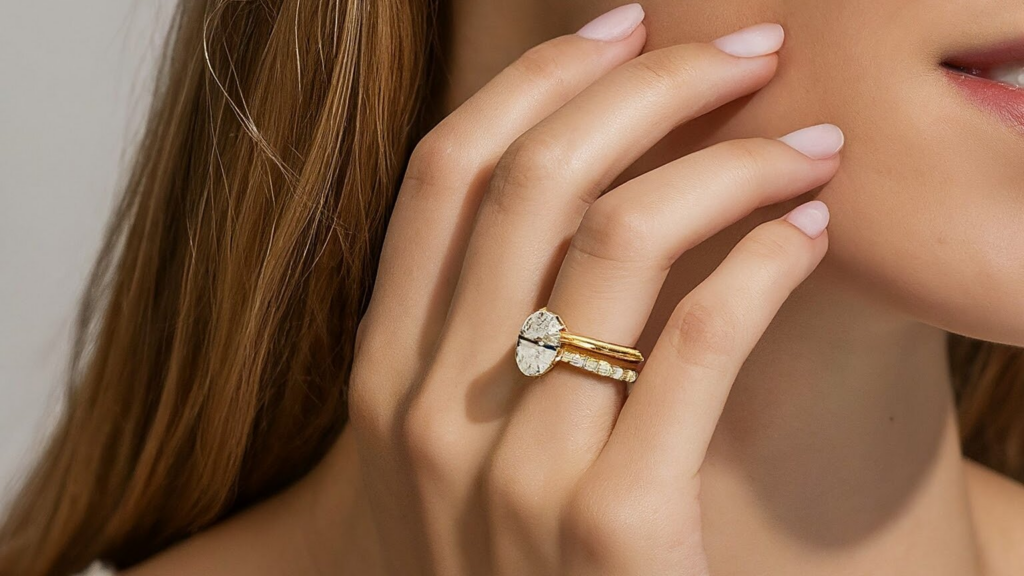
Navigate this guide:
- 7 Quick Tips for Choosing the Ultimate Oval Engagement Ring
- Introduction to Oval Cut Diamond Rings: A Blend of Elegance and Sophistication
- Deciphering the Anatomy of Oval Cut Diamonds
- The Ultimate Guide to Oval Diamond Settings
- The Significance of Metal Choices in Oval Cut Rings
- Our Expert Take
- 10 Frequently Asked Questions about Oval Cut Diamond Rings
Before we dive deeper into the specifics, here are some practical tips to help guide your decision-making process:
7 Quick Tips for Choosing the Ultimate Oval Engagement Ring
Tip 1. Consider the Setting Style:
- Pay attention to how the diamond is set. A bezel or halo setting can offer additional protection to the diamond, especially along the pointed edges, which can be more prone to chipping.
Tip 2. Look at the Symmetry:
- For oval cut engagement rings, symmetry is crucial. Any asymmetry in the cut can be more noticeable once set in a ring, affecting the overall appearance and allure of the ring. Ensure that the two halves of the diamond are identical for the best visual appeal.
Tip 3. Pay Attention to Ring Proportions:
- Consider the proportion between the oval diamond and the ring setting. The diamond shouldn’t overpower the setting, and likewise, the setting shouldn’t overshadow the diamond. A harmonious balance between the two enhances the ring’s overall aesthetic appeal.
Tip 4. Inspect the Mounting:
- Check the security of the diamond in its setting. Prongs should securely hold the diamond without obscuring too much of it. A loose diamond can be susceptible to falling out, while overly tight prongs can apply excessive pressure on the diamond.
Tip 5. Mind the Length to Width Ratio:
- While choosing oval cut diamond engagement rings, consider the length-to-width ratio of the diamond. This ratio impacts the diamond’s shape and how it will look in the setting, with the standard ratio for oval cuts typically ranging from 1.33 to 1.66.
Tip 6. Focus on the Metal Type:
- Select the right metal for the band, considering both your preference and lifestyle. Platinum is durable and hypoallergenic but more expensive, while gold comes in various colors but is softer. The metal type can also impact the overall look of the ring, so choose one that complements the diamond well.
Tip 7. Check for Bowtie Effect:
- The bowtie effect is common in oval cut diamonds and appears as a dark area across the center of the diamond. While almost all oval diamonds have some degree of a bowtie, opt for one where it is minimal or unnoticeable to the naked eye.
Now that you’ve got these practical tips, use Jeweler AI below to find the perfect engagement ring that suits your style and budget:
Introduction to Oval Cut Diamond Rings: A Blend of Elegance and Sophistication
If we all got together and voted for the most iconic jewelry design of the early 2020s, then it’s fairly safe to say that, at the very top of the polling, would be the Oval solitaire. Simple – and yet, as is the case with most timeless designs, endlessly enchanting – it’s incredible how such a close relative to the round brilliant diamond cut can have such a different impact.
So, if you’ve been searching for an engagement ring anytime in the last…well…three years, we’re willing to bet that the thought of an Oval diamond for your centre stone has crossed your mind at least 20 times.
Still feeling tempted? Here is everything you need to know about picking a truly stunning Oval engagement ring – one for the ages.
The Allure of Oval Cut: Unveiling Its Timeless Charm
The oval cut is a deceptively simple shape. While it may feel very similar in vibe to the round brilliant – and, undoubtedly, in terms of its silhouette, it is – the oval certainly stands on its own two feet.
Known as a modified brilliant, it features a highly complex facet pattern that generates a wealth of fire and brilliance (sparkle) and an elongated face-up appearance that enables it to appear bigger than some other diamond shapes, even if the two diamonds are of the exact same carat weight. In other words, a 1 carat oval diamond can appear slightly larger than a 1 carat round diamond.
The Oval cut is actually older than the round brilliant, so it looks fantastic in vintage style settings. At the same time, a simple oval solitaire is the ultimate symbol of simplistic modernity over on Instagram right now…
The Evolution of Oval Cut Rings: From Classic to Contemporary
While the shape took many decades to be perfected to the standard we know and adore today, the Oval cut has been decorating ring fingers and stealing ‘yesses’ for hundreds of years, with the very earliest designs being traced back to the 14th century.
The oval lends itself to a rich, highly-decorative style of design popularised by the Victorians and Edwardians when art nouveau and gothic jewelry styles were all the rage.
By the middle of the 1900s, the diamond cut was perfected – following the example led by the round brilliant in terms of facet structure. Ever since then, the popularity of diamond engagement rings has continued to increase.
Deciphering the Anatomy of Oval Cut Diamonds
Oval cut diamonds are slightly shallower than a lot of other modified brilliant cuts. This is what allows a significant amount of the diamond’s rough weight to be concentrated into the upper portion of the stone, creating a larger appearance than you would get from comma say comma a cushion cut.
This also makes the oval effective at hiding small amounts of color; While the cushion cut tends to betray itself and hold on to color more, the shallower proportions of the oval enable it to appear brighter, whiter, and clearer.
The oval is known for producing more brilliance than fire, a little like the round brilliant diamond shape. However, as is the case with any modified brilliant cut, the oval is not as sparkly as the round brilliant. This is something you should consider if sparkle is your top priority, but it certainly doesn’t mean that the oval can’t bring the wow factor.
Take a look at our full guide to Oval diamond proportions for tips on finding the perfect stone.
The main thing to think about when it comes to the oval cut is minimising the bow tie effect. Any elongated diamond shape is vulnerable to taking on a very dark, obtrusive shadow that runs through the centre of the stone. Bow ties are easy enough to avoid – and, at WillYou, we don’t sell any diamonds with significant bow ties – but, when you’re looking at any elongated shape, it’s important you realise the risks.
The Ultimate Guide to Oval Diamond Settings
Below, we list just a few of our favourite oval diamond engagement ring styles…
Solitaire Settings: Showcasing the Solitary Splendor
This simple, classic design has got all of us acting like the heart eyes emoji lately. The solitaire really allows the sleek, modern vibe of the Oval to shine through, despite its long history in jewelry design. It’s a spin on the round brilliant solitaire that gets our hearts pumping, but it’s not such a break from tradition that it’ll age itself in five years’ time.
Consider a yellow gold to create some beautiful contrast that highlights the clear brightness of the diamond. The metal will create a subtle reflection through the diamond, which will elevate things further.
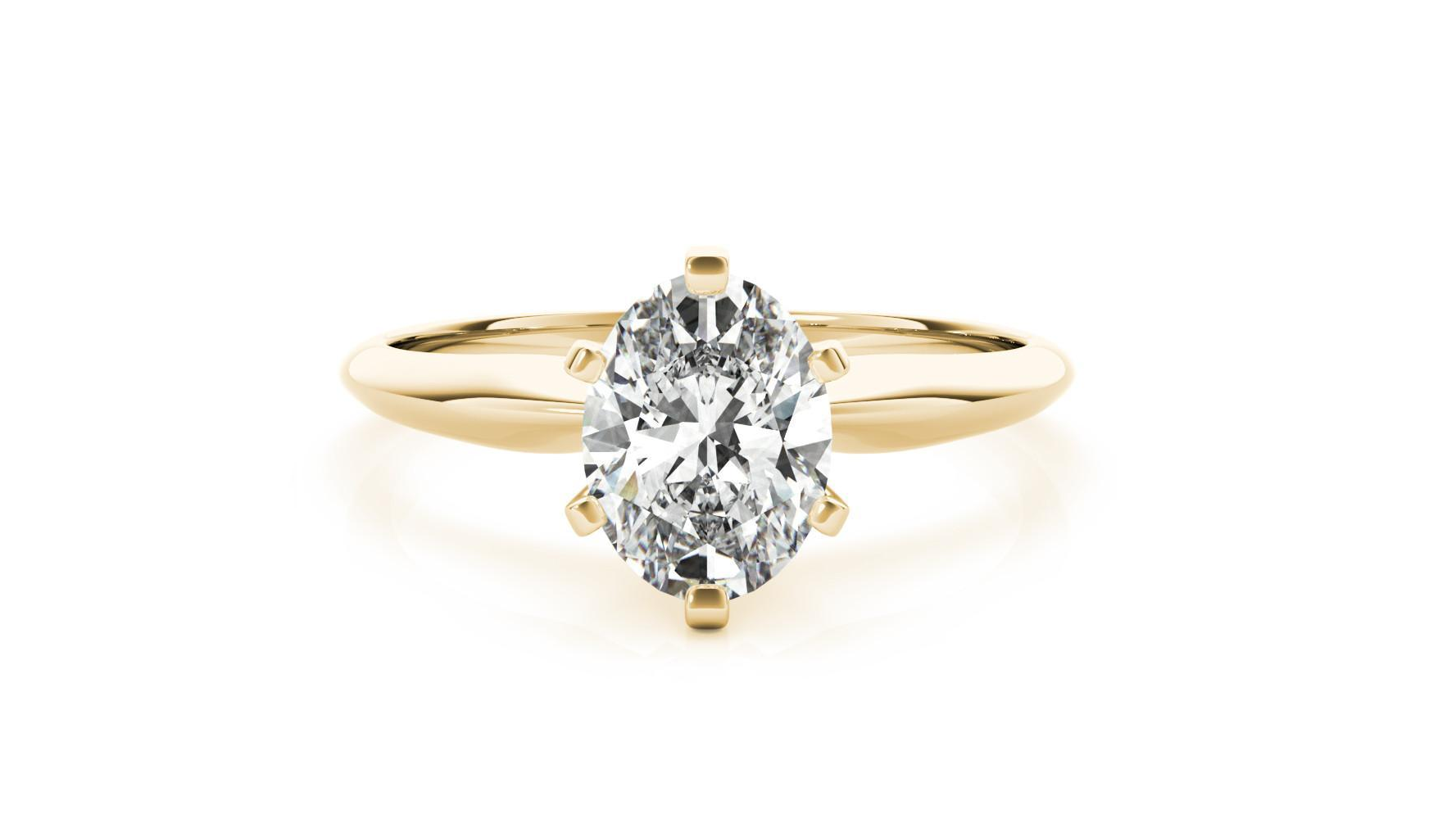
Halo Settings: A Halo of Radiance
A halo is great for accentuating the oval’s shape and dressing up an otherwise simple silhouette into something much more celebratory and ornate.
Tempted but worried about the added bulk? Consider a hidden halo instead. While, at first glance, this design may feel very similar in vibe to the oval solitaire, don’t be fooled: the hidden Halo is a subtle but powerful shift away from the simplest designs out there. While this feature enables the Oval diamond to remain the star of the show and hit all those notes in terms of silhouette and sleekness, the hidden halo adds an extra dose (and a big one at that) of sparkle and intrigue to the ring.
As the wearer’s hand moves, those extra, little diamonds will catch the light and emit a gorgeous display of fire and brilliance that will only serve to enhance the oval’s own light performance.
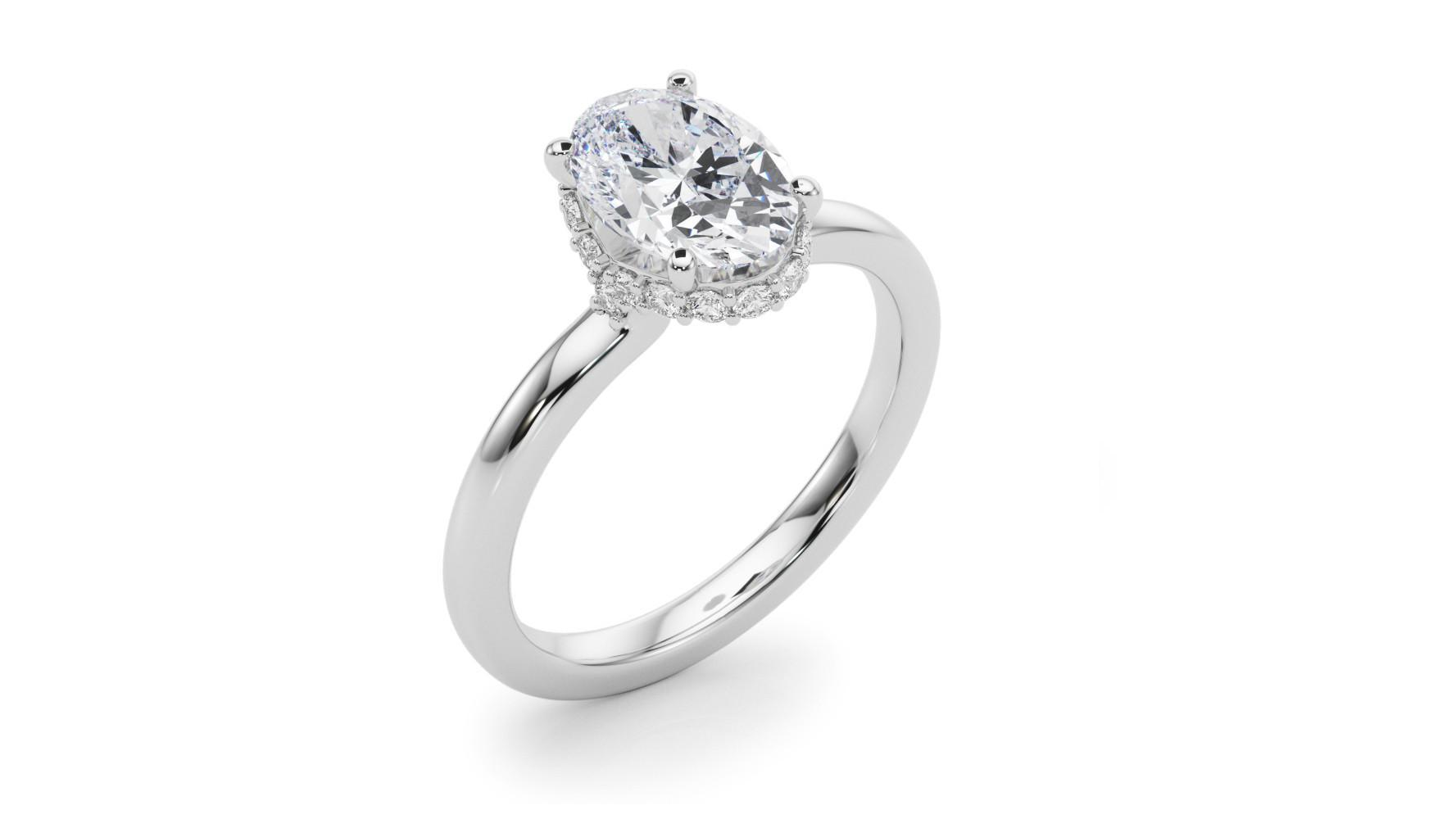
Bezel Settings: The Blend of Security and Style
A bezel is the ultimate in sleek, modern design, which means it pairs very effectively with the oval. The oval diamond’s reinvention for contemporary styles is admirable, and that thin band of metal around the diamond perimeter – despite the fact that it can reduce light performance slightly – is a really effective way to seal its status as a modern, edgy choice for a modern, edgy bride to be.
Vintage vs. Modern: Navigating Through Styles
While it is not always this cut and dry, we find that the Oval tends to fall into one of two camps: the minimalistic modern designs, and the more elaborate, vintage designs. That’s not to say that you can’t design a modern engagement ring with more intricate details integrated into the design, but that, when it comes to the oval, added features tend to make this shape
The Significance of Metal Choices in Oval Cut Rings
On the fence about metal color? The most important thing to focus on is aligning the ring’s design with your partner’s tastes. Don’t go for yellow gold if she only ever wears white gold, platinum, and sterling silver.
But, if you’ve got a bit more creative scope, here’s what’s worth knowing…
The Impact of Metal on Oval Diamond’s Visual Appeal
As with any diamond shape, the metal color you choose will impact the overall appearance of the diamond. Yellow and rose gold create gentle reflections through the centre of the stone, whereas platinum and white gold highlight the brightness of the diamond, while also contrasting with any slight trace of color.
In other words, you can afford to have a diamond slightly lower on the GIA’s color scale if you’re opting for a colored metal. If you’re going for a white metal, then focus on the higher grades in the Near Colorless range.
Our Expert Take
Who doesn’t love the look of an Oval engagement ring? Now more than ever, the Oval is a staple of romance and luxury, but its timeless silhouette means that it’s not going to experience a sharp fall from grace when the trend cycles move on without it.
While some shapes, like the pair, or a lot more vulnerable to fashion cycles, the Oval has that enduring elegance to see it through the height of popularity, and the ‘low’ (so to speak) on the other side.
10 Frequently Asked Questions about Oval Cut Diamond Rings
- Q1. What makes an oval cut diamond ring unique?
- Oval cut diamonds are unique due to their elongated shape, which offers a distinctive and elegant appearance. They often appear larger than round cut diamonds of the same carat weight, providing a flattering illusion of size and length on the hand.
- Q2. How do I choose the best setting for an oval cut diamond?
- The best setting for an oval cut diamond enhances its shape and brilliance without obscuring it. Popular settings include solitaire, halo, and bezel. Consider a setting that offers both aesthetic appeal and protection for the diamond.
- Q3. Are oval cut diamond rings more expensive than other shapes?
- Oval cut diamonds can vary in price, but they are generally more affordable than round cut diamonds due to less waste during the cutting process. Prices also depend on the 4Cs: cut, color, clarity, and carat weight.
- Q4. What should I look for in an oval cut diamond’s symmetry?
- Symmetry is crucial for oval cut diamonds. Look for a diamond where both halves are identical, ensuring the oval shape is perfectly balanced for optimal light reflection and aesthetic appeal.
- Q5. Can an oval cut diamond have a bowtie effect?
- Yes, many oval cut diamonds display a bowtie effect, which appears as a dark area across the diamond’s center. While it’s common, choosing a diamond with a minimal or unnoticeable bowtie effect is preferable.
- Q6. What length-to-width ratio is ideal for oval cut diamonds?
- The ideal length-to-width ratio for oval cut diamonds typically ranges from 1.33 to 1.66. This ratio affects the diamond’s overall shape, with a preference towards personal taste and the desired final appearance.
- Q7. How do I ensure the oval diamond is mounted securely?
- Inspect the mounting to ensure the prongs securely hold the diamond without hiding too much of it. The mounting should protect the diamond, particularly at its points, to prevent chipping or loosening.
- Q8. What metal types are best for oval cut diamond rings?
- Platinum and gold (yellow, white, or rose) are popular choices for their durability and aesthetic. Platinum is especially durable and hypoallergenic, while gold offers a classic appeal. Choose a metal that complements the diamond and suits personal style and lifestyle needs.
- Q9. How can I avoid the bowtie effect in an oval cut diamond?
- To minimize the bowtie effect, closely inspect the diamond under various lighting conditions and choose one where the bowtie is less pronounced or blends well with the diamond’s overall sparkle.
- Q10. Are oval cut diamond rings suitable for engagement rings?
- Absolutely, oval cut diamond rings are highly popular for engagement rings due to their elegant shape, unique appearance, and the flattering elongation effect they have on the finger, making them a romantic and stylish choice.
Transform your love story with the perfect oval cut ring from Jeweler AI. Discover elegance now!
FOLLOW-UP GUIDE SERIES





